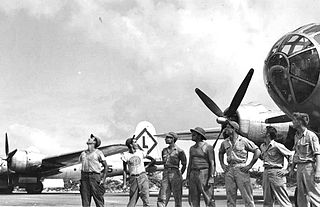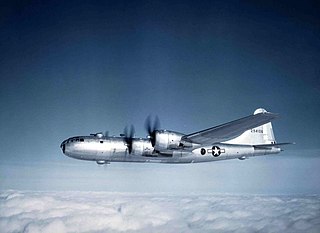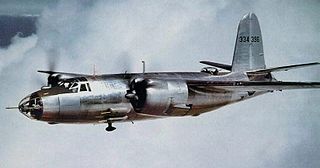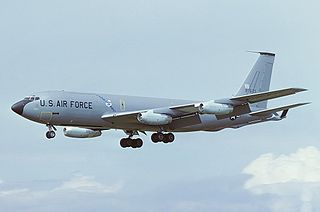
The 331st Bombardment Group is an inactive United States Air Force unit. It was last assigned to the 315th Bombardment Wing, being stationed at Northwest Field, Guam. It was inactivated on 15 April 1946.

The 346th Bombardment Group is a former United States Army Air Forces unit. It was last assigned to the 316th Bombardment Wing at Kadena Airfield, Okinawa, where it was inactivated on 30 June 1946. The group was originally a heavy bomber training unit, but was inactivated in a general reorganization of Army Air Forces training units in 1944. It was reorganized as a Boeing B-29 Superfortress group later that year. It moved to Okinawa in 1945, but arrived too late to participate in combat.

The 382d Bombardment Group is a former United States Army Air Forces unit. It was last stationed at Camp Anza, California, where it was inactivated on 4 January 1946. The group was active from 1942 to 1944 as a heavy bomber training unit. It was reorganized as a very heavy bomber unit and trained for deployment overseas. However, it arrived at its overseas station too late to see combat, and returned to the United States, where it was inactivated.

The 383d Bombardment Group is a former United States Army Air Forces unit. It was last stationed at Camp Anza, California, where it was inactivated on 4 January 1946. The group was active from 1942 to 1944 as a heavy bomber training unit. It was reorganized as a very heavy bomber unit and trained for deployment overseas. However, it arrived at its overseas station too late to see combat, and returned to the United States, where it was inactivated.

The 393d Bombardment Group is a disbanded United States Air Force unit. It was part of Second Air Force, and last stationed at Sioux City Army Air Base, Iowa, where it was inactivated on 1 April 1944. During World War II the group was a Boeing B-17 Flying Fortress Operational Training Unit, and later a Replacement Training Unit. It was inactivated in April 1944 in a general reorganization of Army Air Forces training units.

The 396th Bombardment Group is a former United States Army Air Forces unit. It was active during World War II as a Boeing B-17 Flying Fortress Operational Training Unit, training newly organized units, then as a Replacement Training Unit for aircrews. It was inactivated in 1944 in a general reorganization of Army Air Forces training units..

The 400th Tactical Missile Wing is an inactive United States Air Force unit. It was last active as the 400th Bombardment Group, a World War II Consolidated B-24 Liberator Replacement Training Unit. The unit was disbanded in 1944 in a general reorganization of Army Air Forces training units. It was reconstituted as a missile wing in 1985, but has not been active since then.

The 435th Bombardment Squadron, also known as the "Kangaroo" Squadron, is an inactive United States Air Force unit. It was formed in Australia in March 1942 as the 40th Reconnaissance Squadron and participated in combat in the Southwest Pacific Theater until November, when it was withdrawn from combat and returned to the United States, where it acted as a Replacement Training Unit until October 1943, when its personnel and equipment were withdrawn.

The 334th Bombardment Group is an inactive United States Air Force unit. From 1942 to 1944, it served as a Replacement Training Unit at Greenville Army Air Base, South Carolina. It was disbanded on 1 May 1944 in a reorganization of Army Air Forces training units. The group was reconstituted in 1985 as the 334th Air Refueling Wing. It was converted to provisional status in 2005 as the 334th Air Expeditionary Group and has been activated for exercises.

The 395th Bombardment Group is an inactive United States Air Force unit. It was part of Second Air Force, serving as a heavy bomber training unit from February 1943 until it was inactivated on 1 April 1944 in a reorganization of Army Air Forces training units..

The 88th Bombardment Group is an inactive United States Air Force unit. During World War II, the group served as a training unit for Boeing B-17 Flying Fortress units and aircrews. It was inactivated in May 1944, when the Army Air Forces reorganized its training units, replacing units like the 88th that were organized under rigid tables of organization.

The 335th Air Refueling Wing is an inactive United States Air Force unit. The group was active at Barksdale Field, Louisiana from July 1942 as a training unit for medium bomber aircrews. It was disbanded in May 1944, when the Army Air Forces reorganized its training and support units in the United States. The group was reconstituted in 1985 as the 335th Air Refueling Wing, but has not been active since then.

The 507th Bombardment Squadron is a former unit of the United States Army Air Forces. It was briefly activated in the spring of 1944, then activated again in the summer as a Boeing B-29 Superfortress unit. It trained for active service during World War II, but moved to its combat station of Kadena Airfield, Okinawa too late in the war to undertake combat missions. It remained on the island until it was inactivated on 28 May 1946.

The 68th Air Refueling Squadron is an inactive United States Air Force unit. It was last assigned to the 305th Bombardment Wing at Bunker Hill Air Force Base, Indiana, where it was inactivated on 25 March 1965.

The 467th Bombardment Squadron is an inactive United States Air Force unit. It served during World War II as an Operational Training Unit, and later as a Replacement Training Unit. It was inactivated at Dalhart Army Air Field, Texas in the spring of 1944 in a general reorganization of Army Air Forces support and training units in the United States.

The 380th Air Refueling Squadron is an inactive United States Air Force unit. It was last assigned to the 380th Bombardment Wing at Plattsburgh Air Force Base, New York where it was inactivated on 30 September 1995.

The 702d Tactical Air Support Squadron is an inactive United States Air Force unit. It was part of the 601st Tactical Air Control Wing at Bergstrom Air Force Base, Texas, from 1969 until it was inactivated on 30 November 1975.

The 463d Bombardment Squadron is an inactive United States Air Force unit. Its last assignment was with 346th Bombardment Group at Kadena Airfield, Okinawa, where it was inactivated on 30 June 1946. From 1942 the squadron served as a replacement training unit for heavy bomber aircrews. It was inactivated in the spring of 1944 in a general reorganization of Army Air Forces training units. The squadron was activated again in 1944 as a Boeing B-29 Superfortress unit. Although it deployed to the Pacific, it arrived too late to see combat service.

The 464th Bombardment Squadron is an inactive United States Air Force unit. Its last assignment was with the 382d Bombardment Group at Camp Anza, California, where it was inactivated on 4 January 1946. From activation in 1942 the squadron served as a replacement training unit for heavy bomber aircrews. It was inactivated in the spring of 1944 in a general reorganization of Army Air Forces training units. The squadron was activated again in September 1944 as a Boeing B-29 Superfortress unit. Its ground echelon deployed to the Pacific in 1945, but arrived too late to see combat.

The 333d Special Operations Wing is an inactive United States Air Force unit. It was active from July 1968 through March 1970 at Pleiku Air Base, South Vietnam. In 1985, the wing was consolidated with the 333d Bombardment Group as the 333d Special Operations Wing.


















